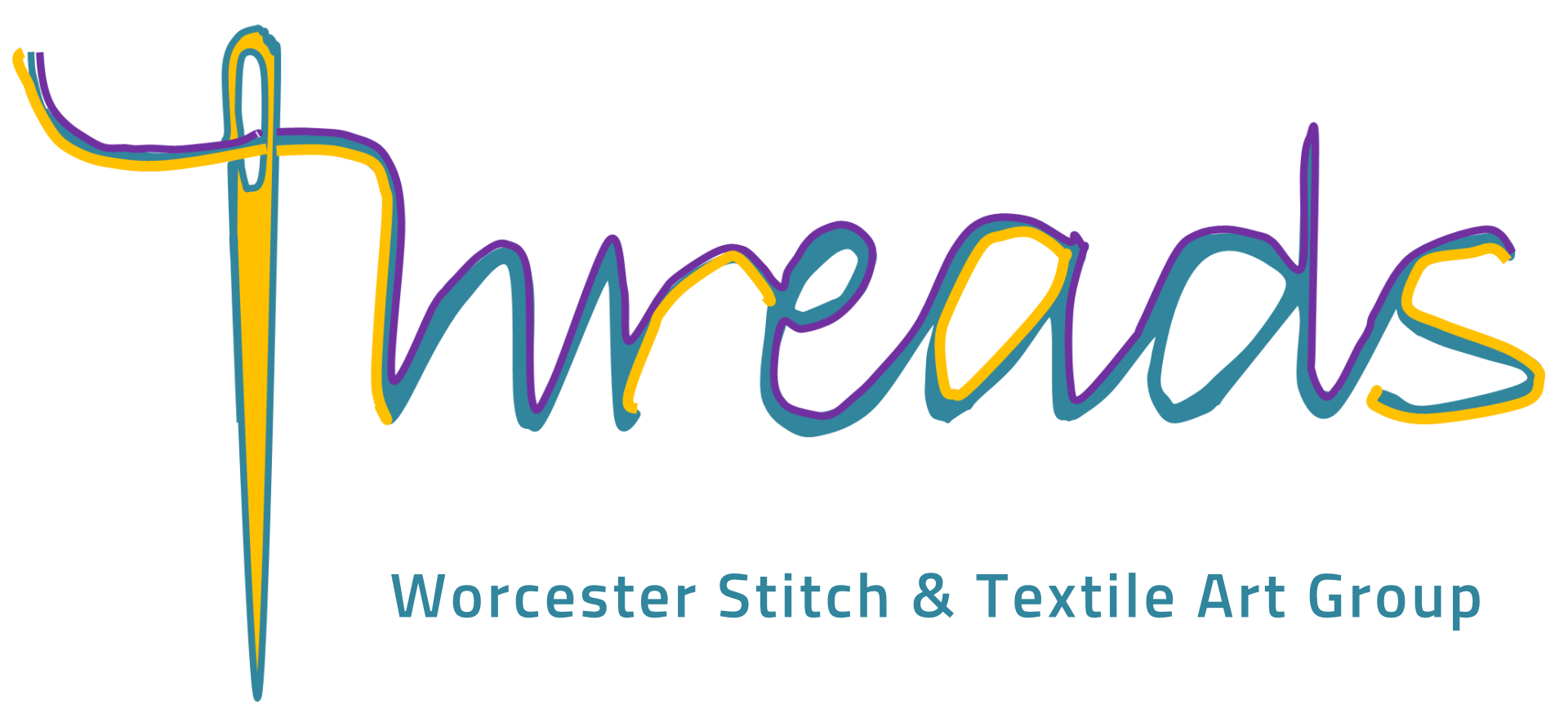



| Our other activities: |
07 May 2024
Liz started her talk by saying that it was a joy to, once again, visit a group with so much energy and enthusiasm. She went on to confess to being an addicted embroiderer eating, sleeping, drinking & dream ing embroidery! The numerous examples of work passed around during the talk illustrated just how prolific a stitcher she is.
Liz is predominantly an embroiderer and so approaches incorporating her embroidery into other work from this perspective. She like s to see work being used and this leads to embroideries being incorporated into quilts, cushions, wall hangings , runners and mats as well as worked onto commercially made clothing and bags.
Throughout her talk Liz emphasised the need to build confidence in our skills by starting with something small using inexpensive materials. Prewashed calico makes a good basis for embroidery and a “doodle cloth” is useful for trying out new stitches. Before starting on a large project Liz recommended testing out the plan ned stitches, fabric and threads on a smaller sample. For help with specific stitches Liz directed us to the Royal School of Needlework Stitch Bank ( rsnstitchbank.org/ org/) or Mary Corbet’s Needle ‘n Thread needlenthread.com/ both of which provide excellent instructions.
When considering incorporating embroidery into usable items Liz said that it is important to do some planning before starting work, think about t he final use of the piece as this may impact on the materials and types of stitches used. The order of work could be important, for example, if the intention is to do detailed embroidery stitches it may be a good idea to work those before adding any waddin g which would make the stitching harder to do.
Liz suggested that there are a number of requirements for a successful project, these include a good, sharp needle that is the correct size for the threads being used, a clearly drawn pattern that can be tran sferred onto your chosen fabric and a fabric that will stand up to the planned use.
In conclusion, Liz said that it is important to remember that our embroidery is special and that we should value the work that we do, we should add our name and the date t o our work when it has been completed.
SG
Our May 2024 gallery